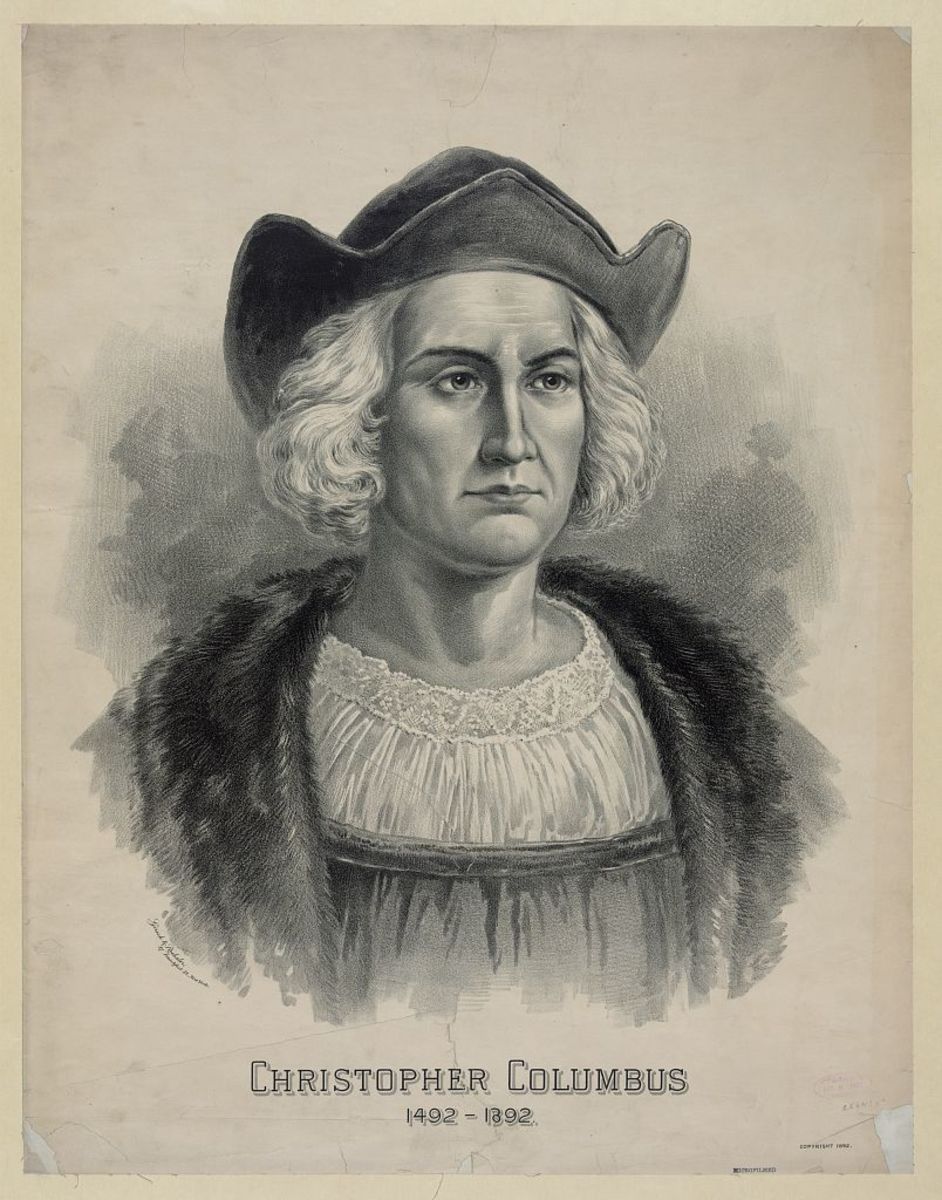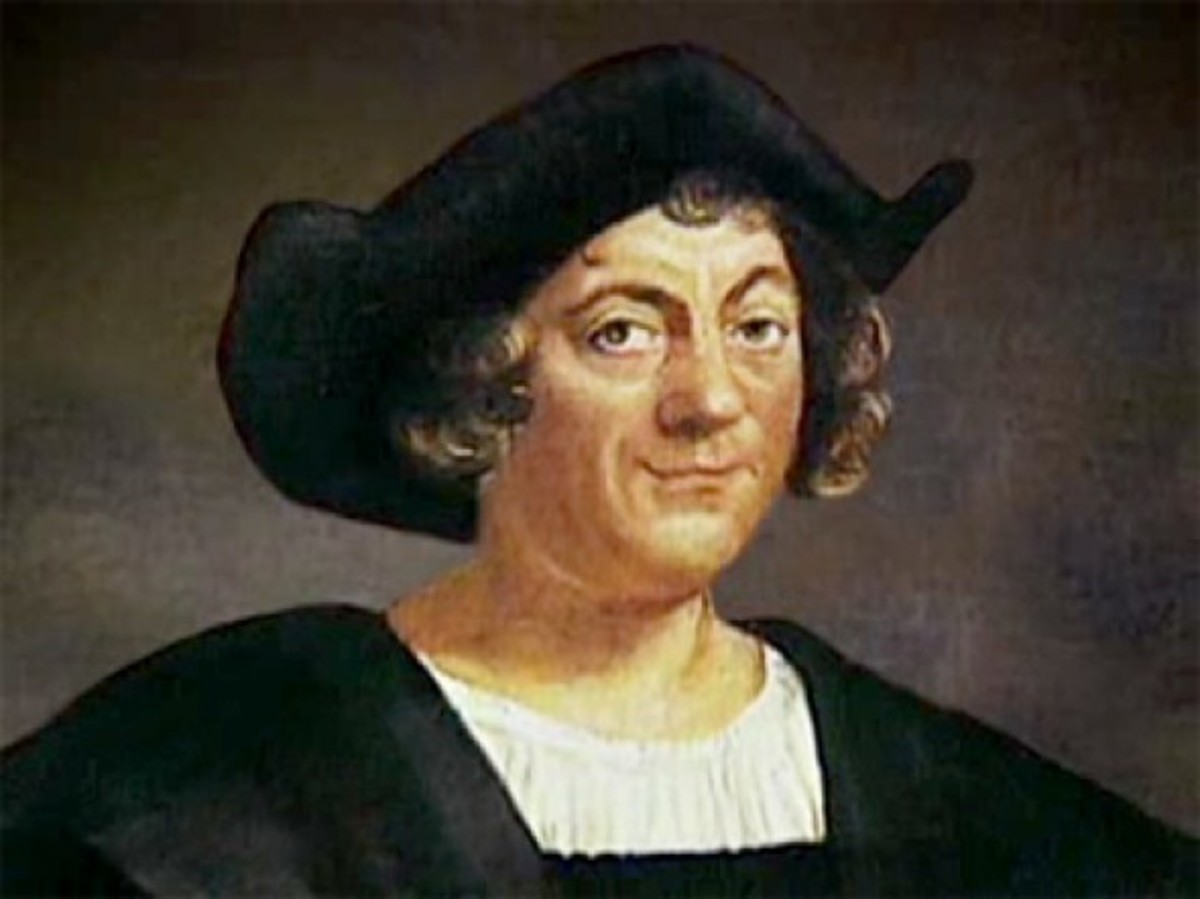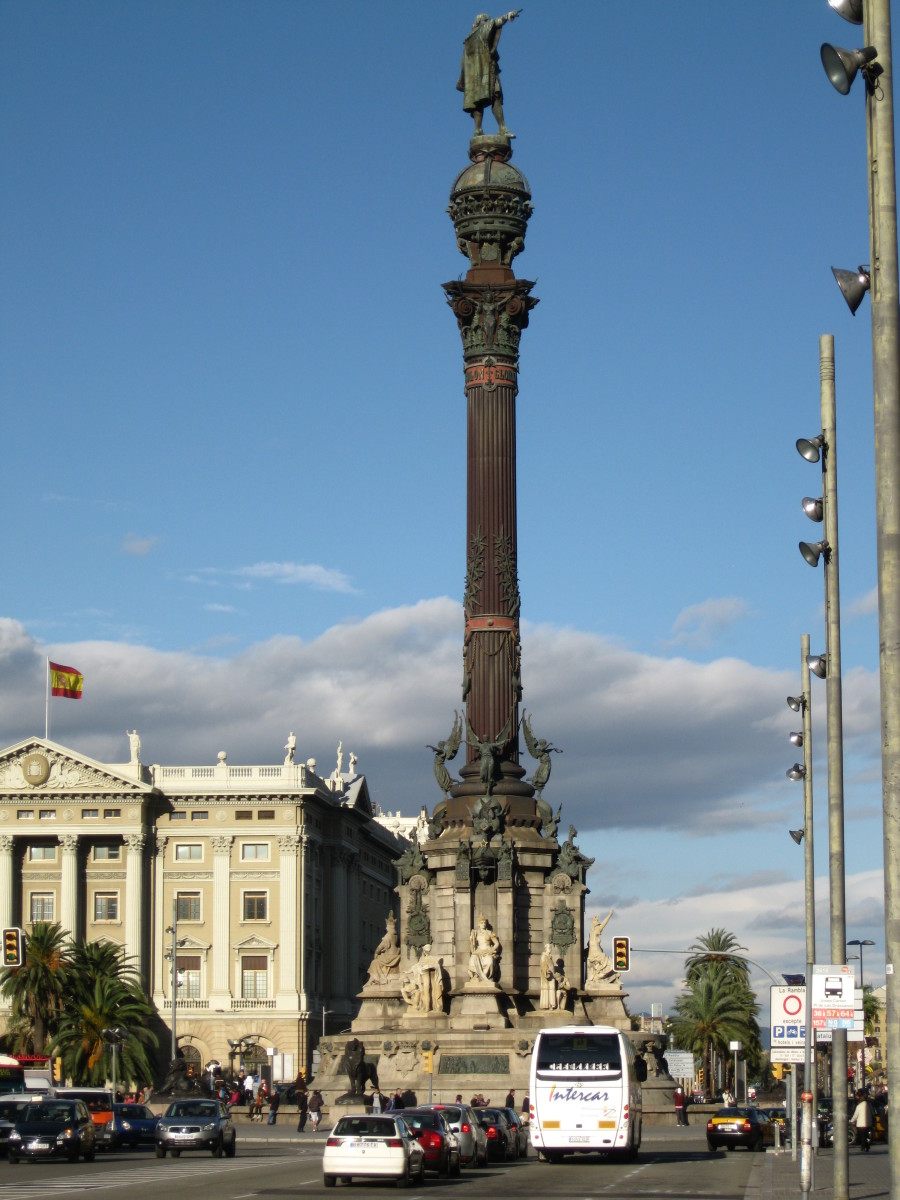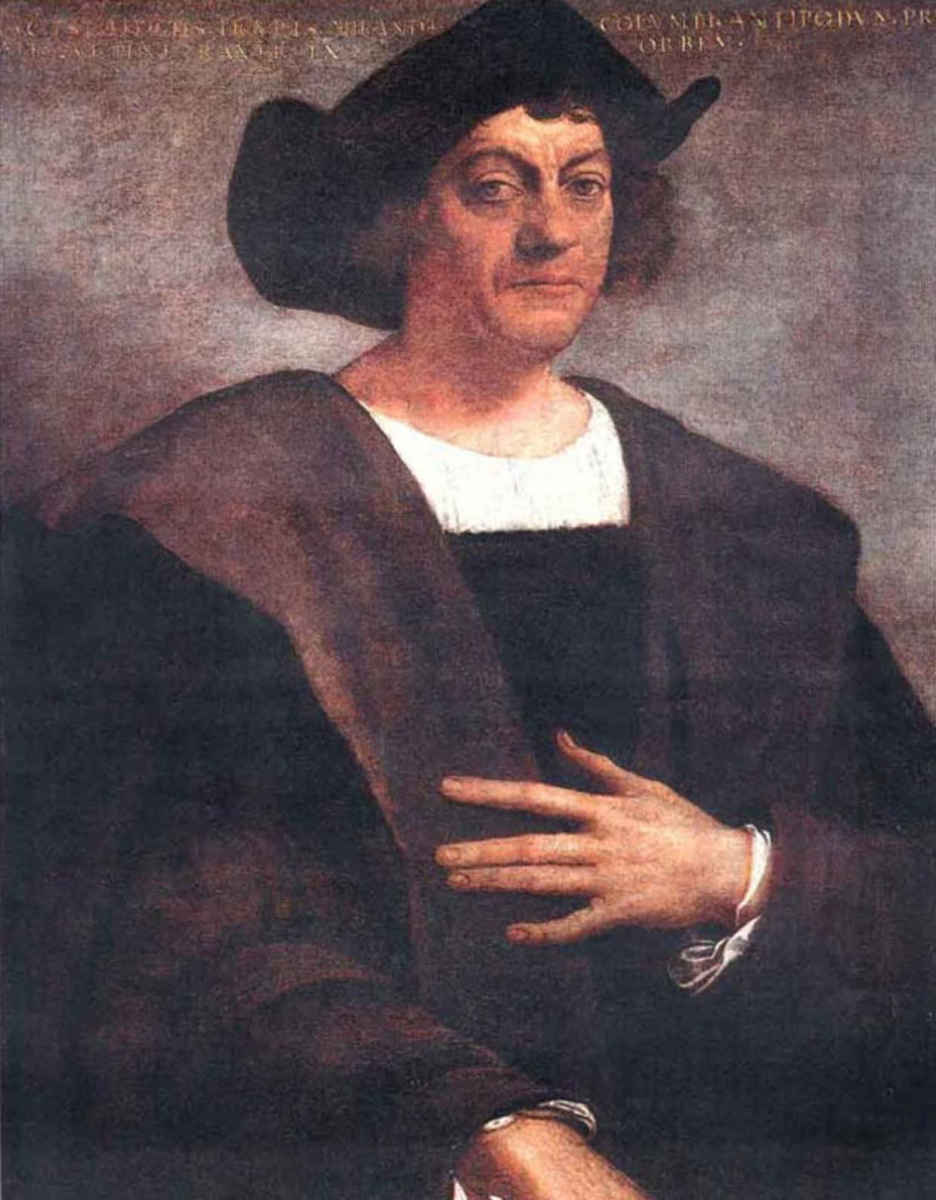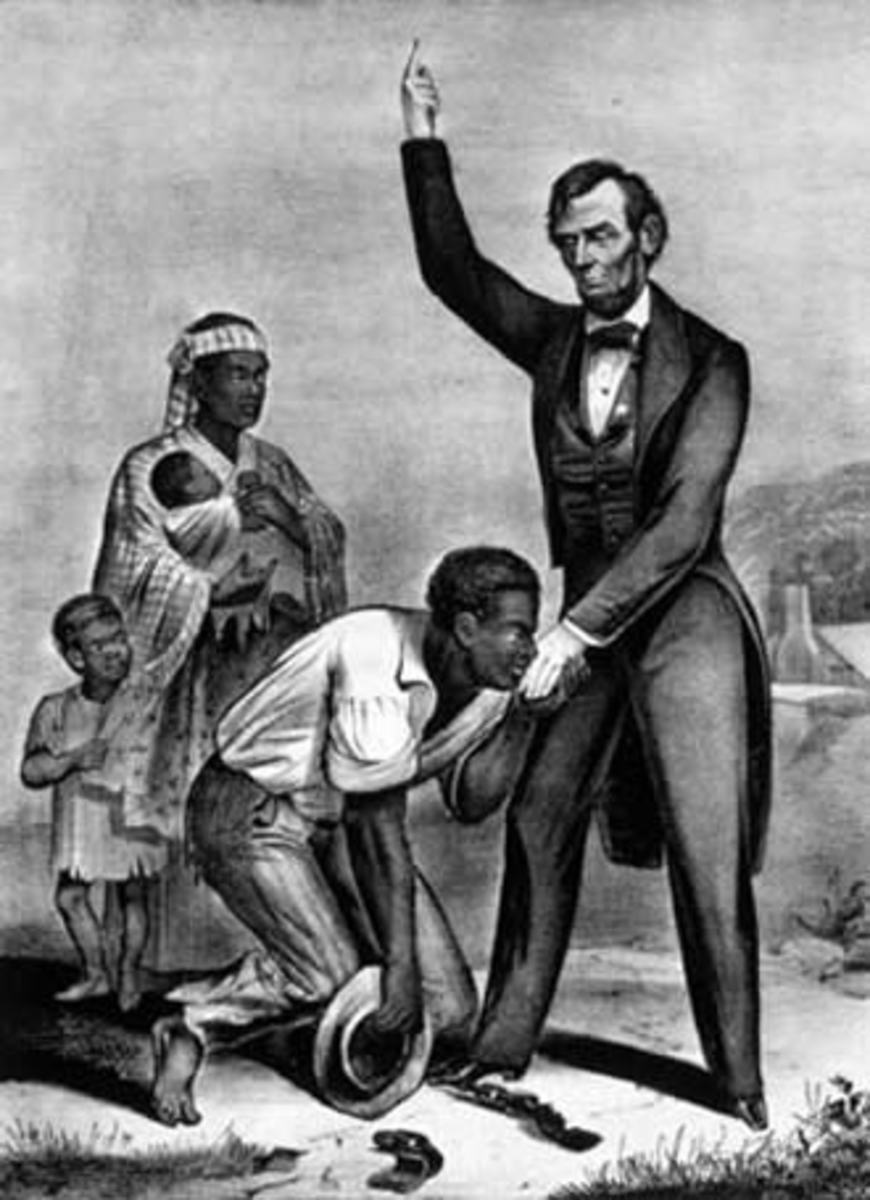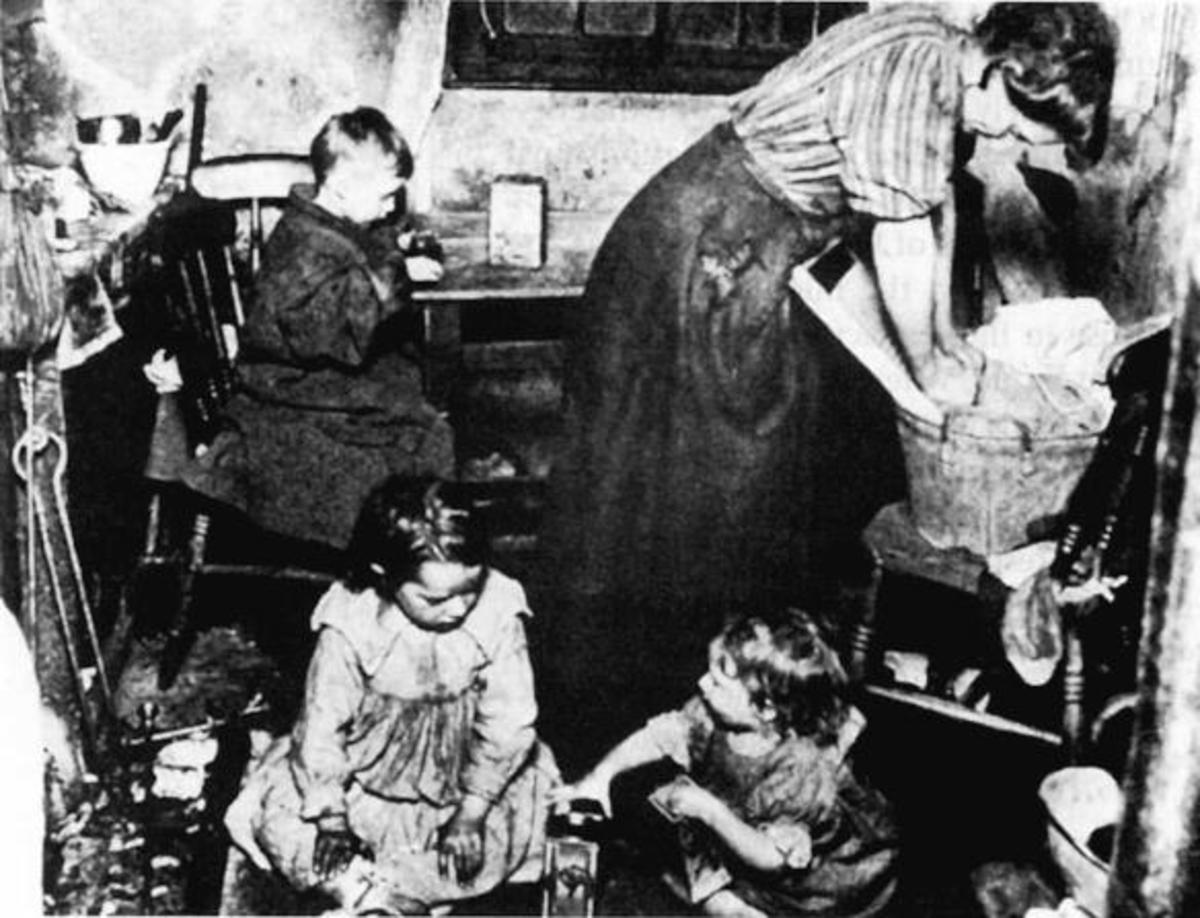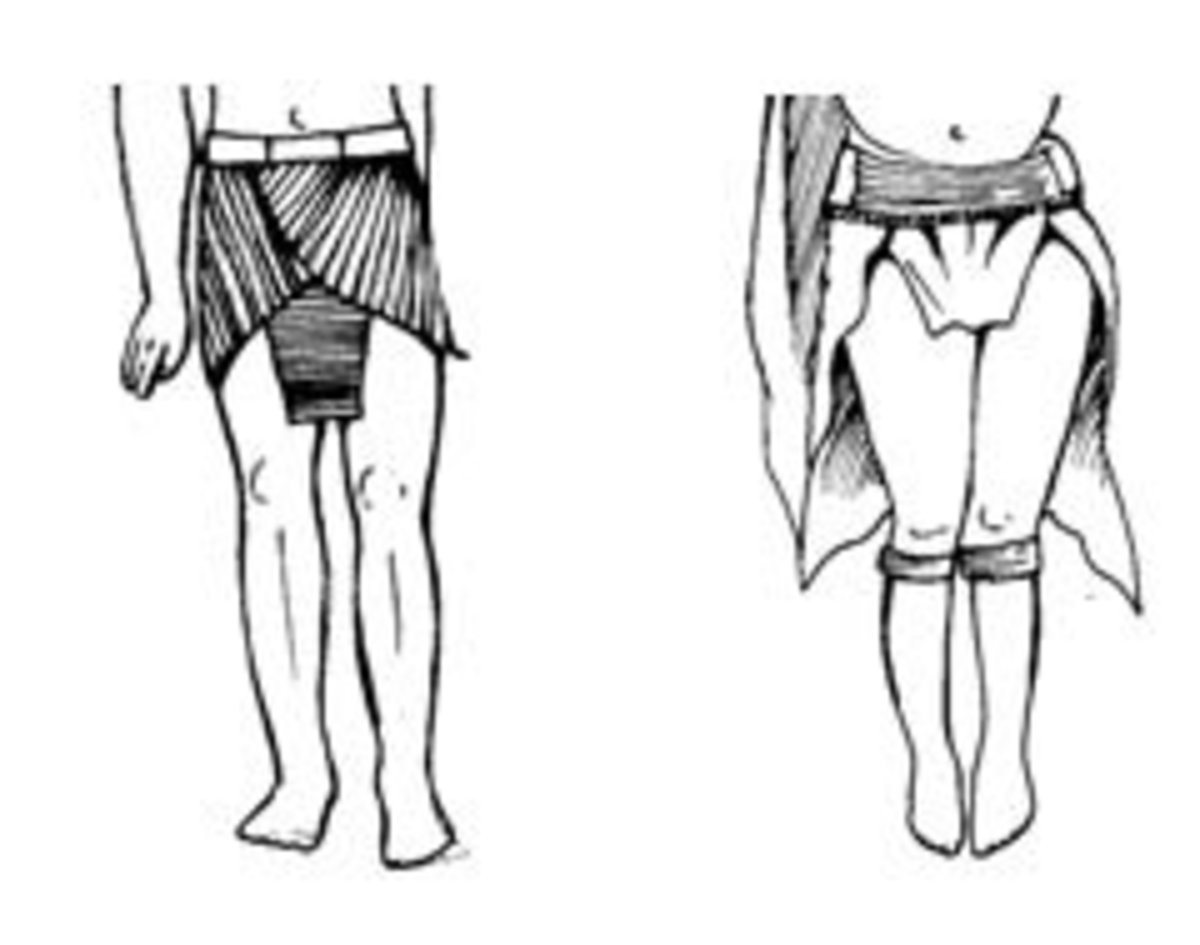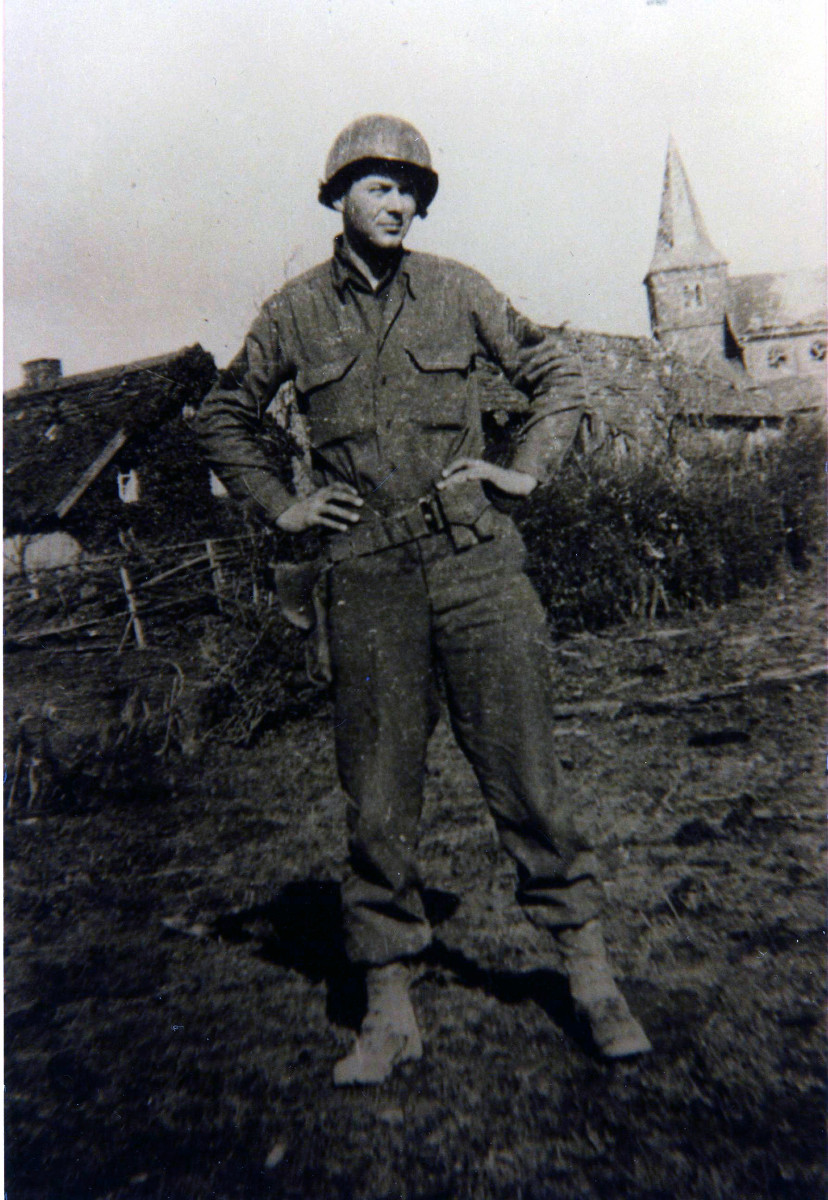Biography of Christopher Columbus
Christopher Columbus
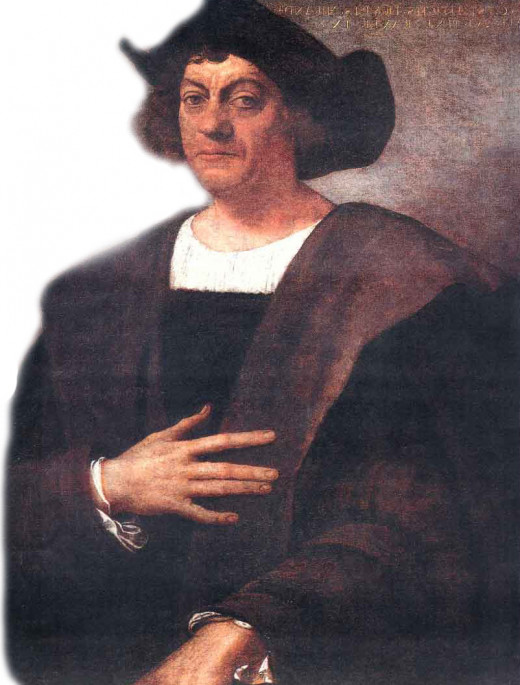
The Early Years of Christopher Columbus
Christopher Columbus, the famed explorer, was born in 1451 in Genoa, Italy. His father was a wool merchant and a weaver. Columbus became interested in the seas from the time he was about 13 years old. He would take his father’s wool to sell to other parts of Italy. He was part of many trading expeditions to the Aegean and Mediterranean seas.
His first sailing in 1476, into the Atlantic Ocean, was a dangerous voyage The commercial fleet he was sailing on was attacked by French pirates near the coast of Portugal. Columbus fought for his life, as the ship was set on fire. Columbus, although wounded, swam to the shores of Portugal, and ended up in Lisbon.
He settled in this part of Portugal, and married a woman named Felipa Perestrello. His son, Diego, was born in 1480. Soon afterwards, Felipa died and Columbus moved to Spain. There he and Beatriz Enriquez d Arana, had a son, named Fernando, born in 1488, out of wedlock.
Columbus and his Explorations
Columbus took part in many other voyages to Africa, where he acquired knowledge about the currents of the Atlantic Oceans. Trade routes to the Middle East, were dominated by Muslims, which made travel to China and India very hard. Columbus thought there might be a quicker and safer sailing route by sailing west, across the Atlantic Ocean.
He knew the Earth was round and believed he would be able to sail from Europe to Asia in a continuous water route. He underestimated the distance from Spain to Asia, because he thought the Earth was smaller than it was. .
Portugal did not want to fund his voyage, so Columbus went to Genoa, Italy, and then to Venice to try to get financial support for his expedition. He was rejected by both places. He then went in 1486, to Queen Isabella of Castille, and Ferdinand of Aragon. Initially, they too rejected his idea. At the time, Spain was at war with the Muslims.
After the Spanish army captured Granada, in 1492, which was the last Muslim stronghold, the Queen of Spain agreed to fund Columbus’ voyage. Columbus left Spain August 1492. He sailed on the Santa Maria, and the Nina and Pinta sailed along.
Columbus spotted land and reached his first landing spot on October 12, 1492.. It was an island that is known today, as the Bahamas. Columbus claimed this land for Spain, calling it San Salvador. The natives of this island exchanged beads made of glass, parrots, cotton balls, and spears. Columbus continued onto what is now Cuba, the Dominican Republic and Haiti.
Columbus thought Cuba was Japan.
The Santa Maria was wrecked on the coast of Haiti. Columbus called this area Hispaniola. They salvaged parts of the ship and built the settlement known as Christmas Town, (Villa de la Navidad). 39 men stayed at this settlement.
The Second Voyage of Christopher Columbus
Columbus thought he reached Asia and so he set his way back towards Spain with the Nina and Pinta. In 1493, he returned to explore more Caribbean Islands. His explorations led him and his crew to the Lesser Antilles.
When he returned to Christmas Town, he discovered the sailors who remained there had been massacred, and the settlement was destroyed. The Queen did not believe in slavery, but Columbus imposed forced labor for the natives so the settlement could be rebuilt. He looked for and found gold, which proved profitable. But the natives hated Columbus.
He left his brothers Bartholomew and Diego to oversee the rebuilt settlement and continued to explore more of the Caribbean. As he continued sailing, he discovered Jamaica, Puerto Rico, and other Caribbean islands. . Columbus now believed he found some outer islands of China.
Columbus and the New World
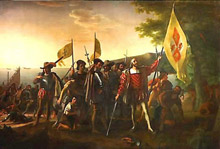
The 3rd and 4th Voyages of Christopher Columbus
On his 3rd voyage, he found Venezuela, but the other sailors on his ship felt they had been misled by Columbus, and there was almost a mutiny. Spain sent a royal official who stripped Columbus of his authority and arrested him. Columbus faced the royal court, but the charges were dropped.
Eventually, Columbus convinced King Ferdinand to let him make anothe voyage. In 1502, he traveled towards the eastern coast of Central America, looking for a route to the Indian Ocean. He got stranded on Cuba, after a stormed wrecked one of the ships he was sailing on.
There was much hostility between Columbus and the natives. He was rescued and taken back to Spain in 1504. He died May 20, 1506, always believing he found a shorter route to Asia.
Columbus had a lasting impact on Europe’s exploration of the New World. His voyages opened up new kinds of trade, Spain and Europe, had never before been exposed to. He opened up trade routes which would eventually make Spain the richest country of the period.



